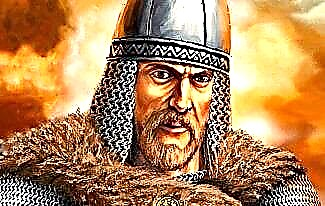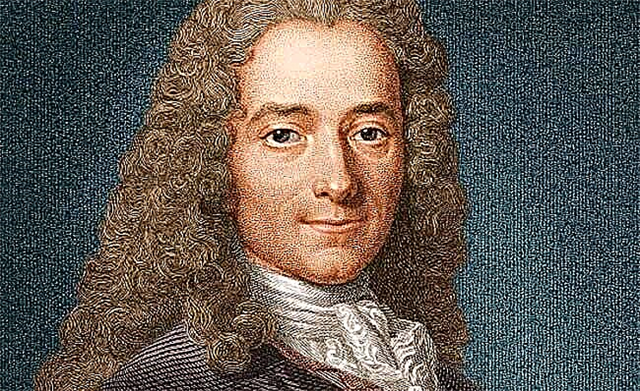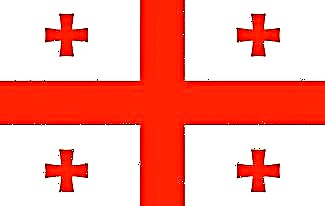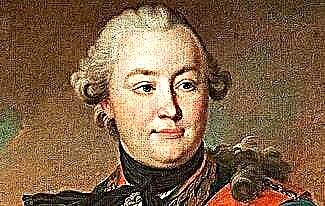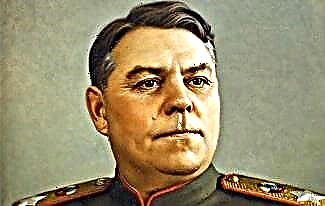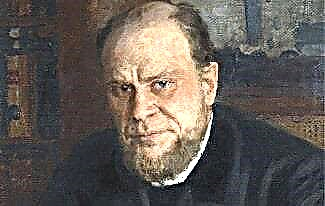Ivan Fedorov (also Fedorovich, Moskvitin) - one of the first Russian book printers. As a rule, he is called “the first Russian book printer” due to the fact that he is the publisher of the first accurately dated printed book in Russia, called “Apostle”.
In the biography of Ivan Fedorov, there are many interesting facts from his personal life and professional activities.
So, before you is a short biography of Ivan Fedorov.

Biography of Ivan Fedorov
The exact date of birth of Ivan Fedorov is still unknown. It is believed that he was born around 1520 in the Grand Duchy of Moscow.
In the period 1529-1532. Ivan studied at the Jagiellonian University, which today is located in the Polish city of Krakow.
According to Russian historians, Fedorov's ancestors lived in the lands that now belong to Belarus.
After graduating from the university, Ivan is appointed deacon in the church of St. Nicholas Gostunsky. At that time, Metropolitan Macarius became his mentor, with whom he began to closely cooperate.
First printing house
Ivan Fedorov lived and worked in the era of Ivan IV the Terrible. In 1552, the Russian tsar ordered the launch of a printing business in the Church Slavonic language in Moscow.
An interesting fact is that before that there were already works in the Church Slavonic language, but they were published abroad.
By order of Ivan the Terrible, a Danish master named Hans Messingheim was brought to Russia. It was under his leadership that the first printing house in the state was built.
After that, the corresponding machines with letters were delivered from Poland, on which book printing soon began.
In 1563, the tsar opened the Moscow Printing House, which was supported by the state treasury. Next year the famous book "Apostle" by Ivan Fedorov will be printed here.

After the "Apostle" the book "The Book of Hours" is published. Fedorov was directly involved in the publication of both works, as evidenced by a number of facts.
It is generally accepted that Ivan the Terrible identified Fedorov as Messingheim's student so that he could gain experience.
At that time, the church was different from the structure of the modern church. The clergy were actively involved in the education of the people, as a result of which all textbooks were somehow interconnected with the sacred texts.
We know from reliable documents that the Moscow Printing House was repeatedly set on fire. This was allegedly due to the work of the scribal monks, who lost income from the factory publishing of books.
In 1568, by order of Ivan the Terrible, Fedorov moved to the Grand Duchy of Lithuania.
On the way, the Russian book printer stopped in Grodnyansky Povet, in the house of a former soldier Grigory Khodkevich. When Chodkevich found out who his guest was, he, being an acting official, asked Fedorov to help open a local printing house.
The master responded to the request and in the same year, in the city of Zabludovo, the grand opening of the printing yard took place.
Under the leadership of Ivan Fedorov, this printing house printed the first, and in fact the only book - "The Teacher's Gospel". This happened in the period 1568-1569.
The publishing house soon ceased to exist. This was due to the political situation. In 1569 the Union of Lublin was concluded, which contributed to the formation of the Commonwealth.

All these events did not make Ivan Fedorov very happy, who wanted to continue publishing books. For this reason, he decides to go to Lviv to build his own printing house there.
Upon arrival in Lviv, Fedorov did not find a response from local officials regarding the opening of a printing yard. At the same time, local clergymen also refused to finance the construction of a printing house, preferring manual census of books.
And yet, Ivan Fedorov managed to bail out a certain amount of money, which allowed him to achieve his goal. As a result, he began printing and selling books.
In 1570 Fedorov published the Psalter. After 5 years, he became the head of the Derman Holy Trinity Monastery, but after 2 years he started building another printing house with the support of Prince Konstantin Ostrozhsky.
The Ostroh printing house successfully worked, releasing more and more new works such as "Alphabet", "Primer" and "Greek-Russian Church Slavonic book for reading." In 1581, the famous Ostrog Bible was published.

Over time, Ivan Fedorov put his son in charge of the printing house, and he himself went on business trips to different European countries.
On such trips, the Russian craftsman shared his experience with foreign book printers. He sought to improve the printing of books and make them available to as many people as possible.
Personal life
We know almost nothing about Ivan Fedorov's personal life, except that he was married and had two sons.
Curiously, his eldest son also became an accomplished book printer.
Fedorov's wife died before her husband left Moscow. Some biographers of the master put forward the theory that the woman allegedly died during the birth of her second son, who also did not survive.
Death
Ivan Fedorov passed away on December 5 (15), 1583. He died during one of his business trips to Europe.
Fedorov's body was taken to Lvov and buried in a cemetery belonging to the Church of St. Onuphrius.



